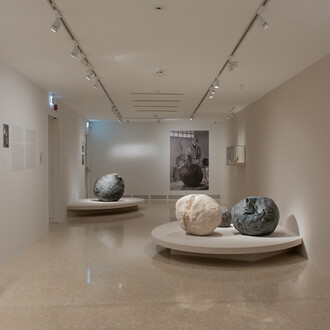Two autonomous exhibition projects present, on the one hand, 100 images by René Burri devoted to architecture and its protagonists and, on the other, 50 previously unseen shots by Ferdinando Scianna for the occasion of the 500 years since the establishment of the Jewish Ghetto in Venice.
After the success of the exhibition Helmut Newton. Photographs, the Casa dei Tre Oci in Venice resumes its exhibition’s programme with two proposals dedicated to two masters of the history of photography: René Burri and Ferdinando Scianna.
From 26 August 2016 until 8 January 2017, the rooms of this Venetian building on the Giudecca island will be hosting the exhibitions “René Burri. Utopia”, organized by Magnum Photos in collaboration with the Casa dei Tre Oci, and curated by Michael Koetzle, and “Ferdinando Scianna. Il Ghetto di Venezia 500 anni dopo”, curated by Denis Curti. The show of work by Ferdinando Scianna exhibits the photographs taken for the Fondazione di Venezia and specifically realised for the Tre Oci on the occasion of the five hundredth anniversary of the establishment of the Jewish Ghetto in Venice.
The two different projects will each follow their own coherent and linear development which will begin with 100 works by René Burri, arranged on the ground floor and the first floor, and will conclude on the second floor with over 50 photographs by Ferdinando Scianna which have never previously been exhibited.
Members of the prestigious Magnum photographic agency (the former since 1959, the latter since 1989), Burri and Scianna both belong, despite their diversity, to that category of artists who, through the means of photography, express highly personal visions, whether translated into Burri’s passion for recording large political and social changes or into Scianna’s attempt to pinpoint “instants of sense and form” within the chaotic flow of existence.
Utopia by René Burri (Zurich 1933-2014) collects together for the first time over 100 images devoted to architecture by this great Swiss artist, with shots of famous buildings and portraits of architects.
Burri’s photography was born from his need to recount the great transformational processes and the historical, political, and cultural changes of the twentieth century, paying close attention to certain people (his portraits of Che Guevara and Pablo Picasso are unforgettable) who were part of it.
Utopia is being held at the same time as the 2016 Venice Biennale of Architecture and reflects this, inasmuch as Burri conceived of architecture as a genuine political and social operation that conveys and imposes a vision of the world; this impelled him to travel throughout Europe, the Middle East, Asia, and Latin America in the footsteps of the great twentieth century architects, from Le Corbusier to Oscar Niemeyer, Mario Botta, Renzo Piano, Tadao Ando, and Richard Meier.
Apart from their portraits and their buildings, Utopia also displays images of historical events that are brimful of contrasts and hopes, such as the fall of the Berlin wall and the protests in Tiananmen Square, Beijing, in 1989.
The top floor of the Casa dei Tre Oci is devoted to the work of one of the most important Italian photographers, Ferdinando Scianna (Bagheria, 4 July 1943). For the occasion of the 500 years since the foundation of the Jewish Ghetto in Venice (on 29 March 1516), the Fondazione di Venezia decided to undertake a photographic reconnaissance with the aim of recounting contemporary aspects of the Ghetto. The exhibition project has been organised by Civita Tre Venezie.
Scianna has undertaken a typically Street Photography reportage by collecting together images of the everyday life of the Ghetto, including portraits, buildings, and the interiors of houses and places for prayer. Churches, restaurants, squares, and gondolas are the subjects that enliven the visual panorama of the project. As part of this narrative, mention should be made of the coexistence of a symbolic, historical, and ritual dimension intrinsically connected to places and gestures, and of simplicity in the description of a present and ordinary time.
The curator Denis Curti has said, “Ferdinando Scianna has been able to construct a delicate story [...]. He has given a form to collective memory by pinpointing and heightening individual stories: we can feel their beauty and solemnity. [...] The pain of the Holocaust, which is never overstated. The stumbling blocks and marks of an event that will remain indelible. [...] We orient ourselves within these photographs. The cardinal points become an embrace and indicate a visual trust that allows us to enter into the intimacy of the many portraits that make up the complex mosaic of this experience: this is the language of affection, and the grammar of the body”.
The exhibition “Il Ghetto di Venezia 500 anni dopo” will have a catalogue in Italian and English, published by Marsilio Editore, which will contain, among other things, essays by Donatella Calabi, Denis Curti, Paolo Gnignatie, and Ferdinando Scianna.


















